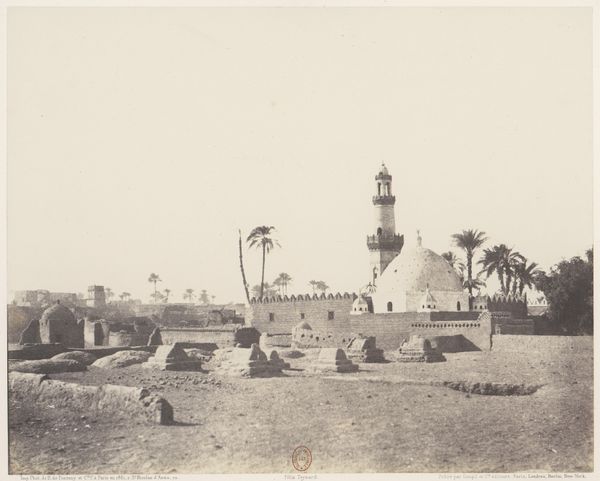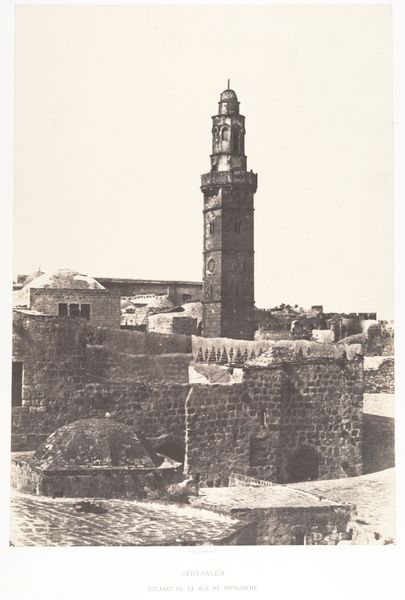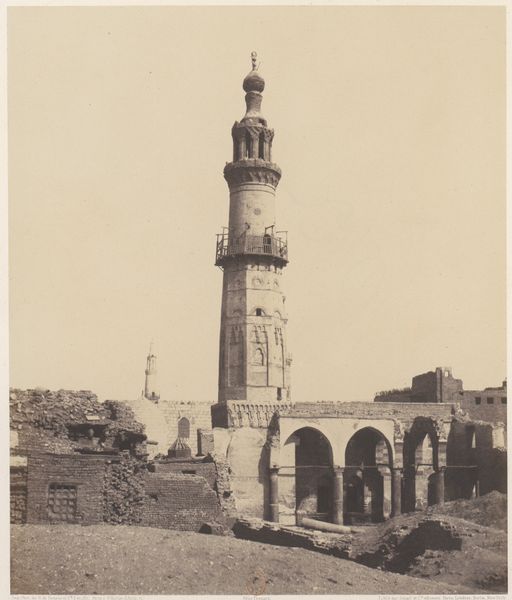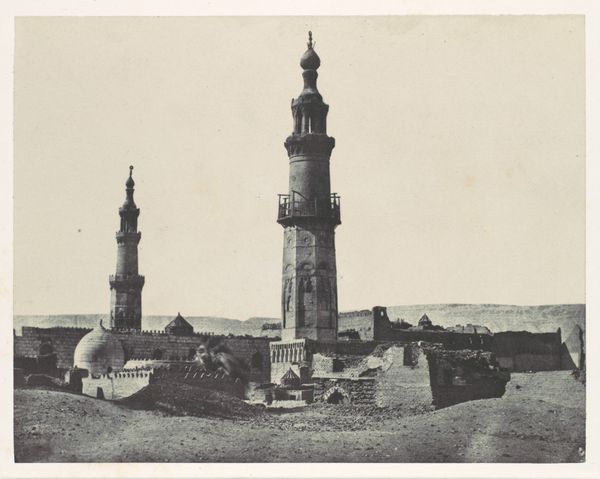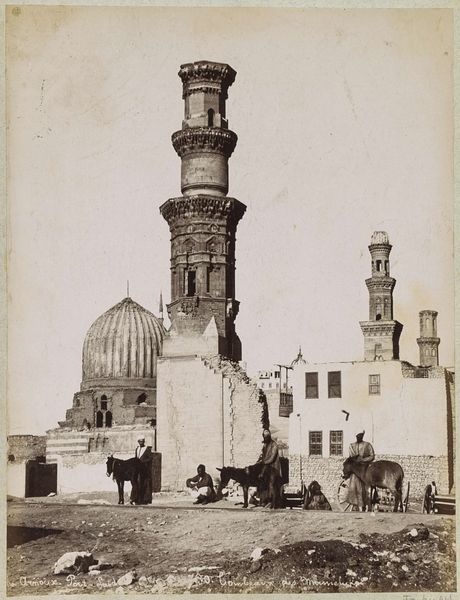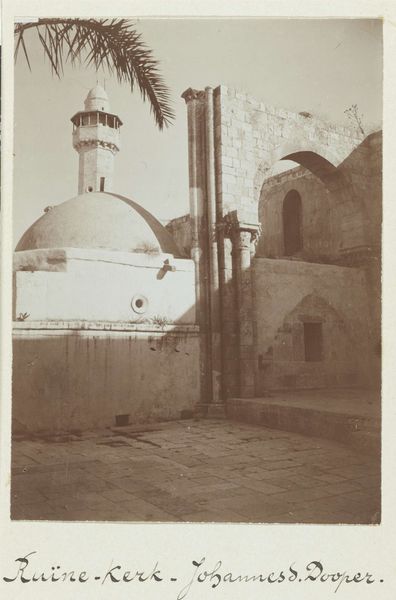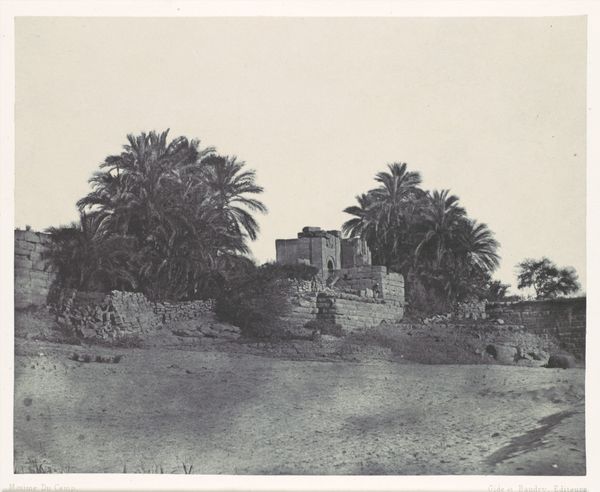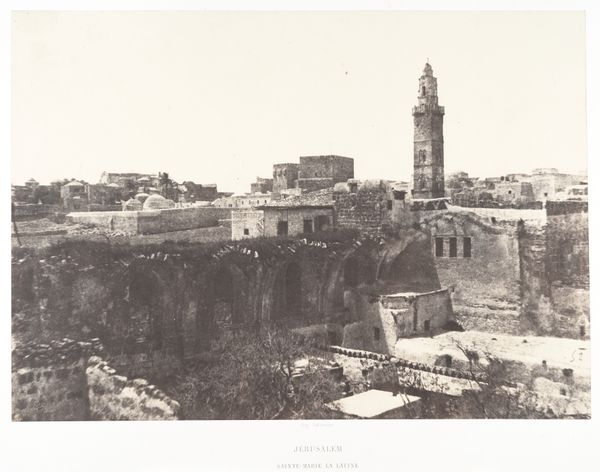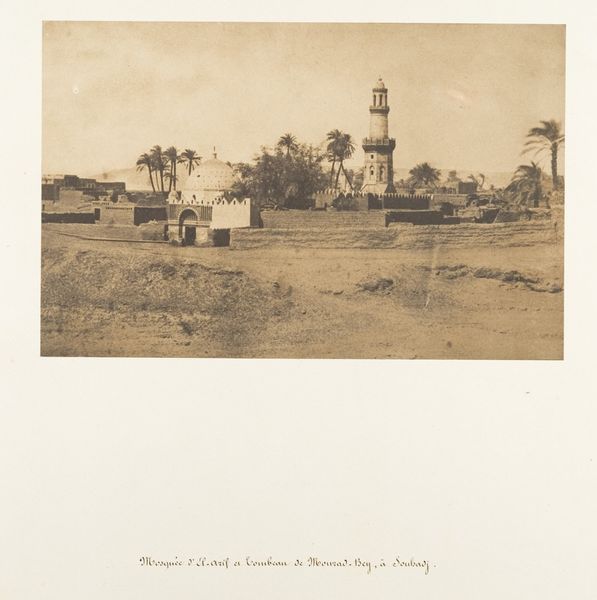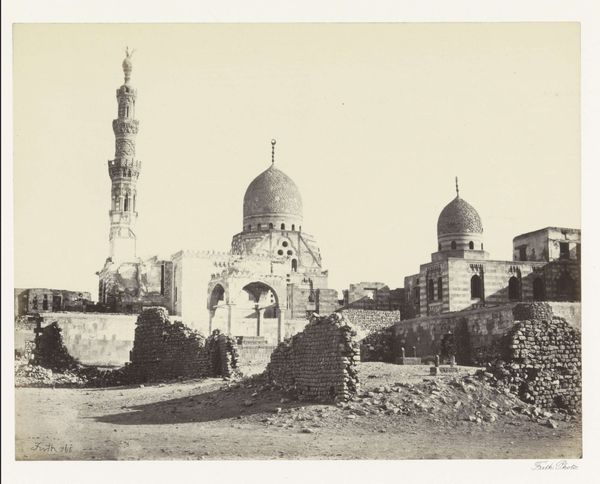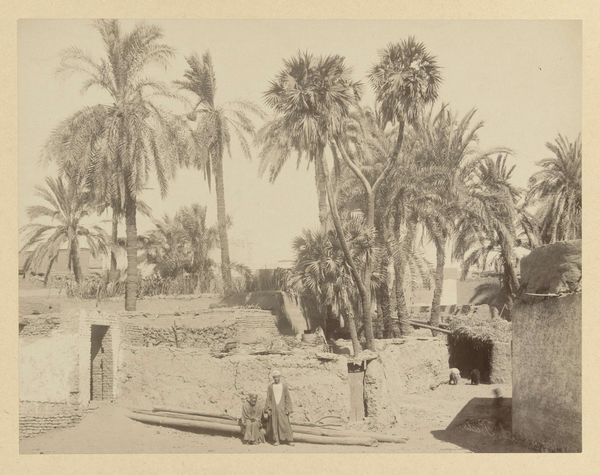
Copyright: Public Domain
Curator: This image has such a calm, serene quality. It almost feels timeless. Editor: And that’s partially due to Francis Frith's skill. This gelatin-silver print, "View at Girgeh," was created in 1857, placing it within early photographic documentation of the Middle East. Curator: Gelatin-silver prints offer such a remarkable tonal range. Looking closely, the granular quality adds a tactile dimension. The details in the crumbling structures of the minaret are almost as mesmerizing as the soft texture of those palm fronds. You can almost feel the hot, dry air. It makes me wonder about the physical labor that went into not just creating the print itself, but the very act of lugging all of that equipment around Egypt at that time. Editor: Exactly! That’s the crucial socio-political context. Frith, and others like him, were, in effect, constructing a Western view of the Orient for European consumption. The image appears documentary, objective, yet its very selection and framing subtly reinforce a specific vision – a carefully cultivated sense of exoticism. Think about the commercial implications and the audience back home. Curator: I see what you mean. The inclusion of everyday life – the animals, the unattended shirt hanging outside – those seemingly ‘realistic’ details would have painted a picture of authentic existence for an outside audience, thus adding perceived value to the overall scene as a cultural representation. How much of this was shaped by the art market as the consumption of imagery through gelatin prints rose during the mid-19th Century? Editor: It’s all interwoven, isn’t it? Consider the Metropolitan Museum of Art itself as a location. By displaying Frith’s photo, the institution places itself as a preserver and arbiter of cultural heritage, playing a crucial role in perpetuating and interpreting history through the art it exhibits. Curator: Well, looking at the image anew, I am compelled to recognize it as a manufactured artifact, a physical product imbued with social and historic intentions far beyond mere replication. The hand of Frith, the conditions he found himself in and his selection of the subject all have social value, despite the gelatin-print appearance that provides its primary source material. Editor: Absolutely. That’s the layered richness we find when we peel back the surface. Now, I view not just a snapshot of a place, but a mirror reflecting the dynamics of power, representation, and artistic legacy.
Comments
No comments
Be the first to comment and join the conversation on the ultimate creative platform.
